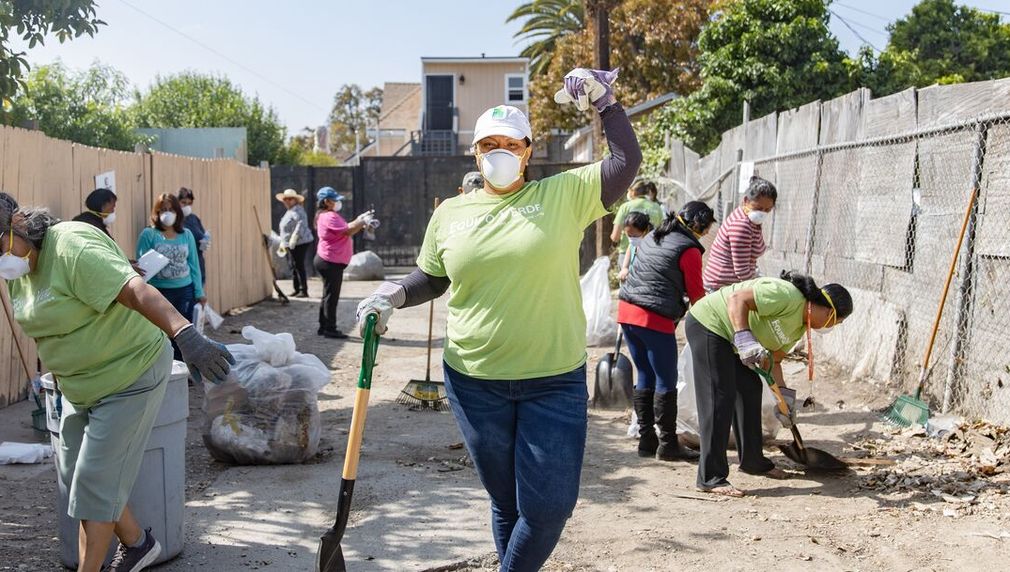Los Angeles Parks for People
Parks are essential to healthy, sustainable communities, offering opportunities for fitness and recreation, economic revitalization, and civic engagement. But today, about half of Los Angeles County’s residents, mostly lower-income and communities of color, cannot access a park close-to-home. The goal of The Trust for Public Land’s Parks for People Program is to ensure that everyone can access a quality park within a 10-minute walk, or half-mile, from home.

What is the primary issue area that your application will impact?
Green Space, Park Access, and Trees
In which areas of Los Angeles will you be directly working?
County of Los Angeles
In what stage of innovation is this project, program, or initiative?
Expand existing project, program, or initiative
What is your understanding of the issue that you are seeking to address?
Today, half of LA County’s 10 million residents have no park within a 10-minute walk from home. Low-income communities have much less park space and fewer quality parks than more affluent ones. These inequities lead to broader disparities in health, poverty, pollution, and crime. As park space per capita decreases, premature mortality from cardiovascular disease and diabetes and prevalence of childhood obesity increases. These same communities have suffered disproportionately from sickness, death, layoffs, evictions, and other hardships during the COVID-19 pandemic. Latinos and poor residents died at three times the rate of white/affluent residents. The lopsided impact of COVID-19 has made inequalities in Los Angeles even worse. Pervasive heat and smog also present health risks, like heat stroke, asthma, which are expected to worsen with climate change. Poor communities withstand the worst of these impacts due to a lack of green spaces to mitigate environmental and climate threats.
Describe the project, program, or initiative this grant will support to address the issue.
For nearly 50 years, we have understood the critical resource our nation's parks, trails, and lands are to communities-- the public outdoor spaces belonging to the community, which can serve as powerful sources of common prosperity. In Los Angeles County, TPL has created a dozen parks, 40 outdoor gyms, and the city’s first green alley network. TPL’s work delivers multiple benefits related to health, environment, community, inspiration, and economy. We help transform abandoned lots into inviting recreational spaces, asphalt-covered schoolyards into verdant campuses, and neglected alleys into vibrant greenways. We begin by using GIS-mapping and other research to site parks in the most vulnerable neighborhoods. We empower residents to choose themes and amenities, and create public art, so that the spaces represent local needs and cultures while deepening residents' connecting to these places and to each other. We partner with landscape architecture firms to translate local input into design documents. During construction, we coordinate with construction managers to keep projects running on time and budget. We organize volunteer groups to keep up the parks and the solidarity. We consider our grassroots approach as important as the parks themselves, since it empowers marginalized groups to take on other challenges affecting their community. Finally, we collaborate with local nonprofits on outreach, art making, job creation, and park activities that add value to the program.
Describe how Los Angeles County will be different if your work is successful.
Our work over the next year will increase park access for over 85,000 residents, including 31,000 kids. This increase in parks and green space will support community engagement and connection though socializing, recreation, and civic engagement. New and improved green spaces will support ecological health, climate resilience, and environmental appreciation and literacy. Parks will encourage people to exercise, play, and relax. Greenery will create refreshing and beautiful environments that alleviate stress and threats of extreme heat and pollution. Residents will create mosaics and murals for their parks, deepening their sense of place and ownership. They will continue to share their heritage with neighbors after the park opens, on stages, amphitheaters, and other platforms. Parks will create opportunities for training and employing at-risk youth in landscaping and construction, opening the way for green careers and increasing economic outcomes across the community.
What evidence do you have that this project, program, or initiative is or will be successful, and how will you define and measure success?
The goal of the Parks for People Program is to ensure that everyone in LA lives within 10-minute walk of a quality park or green space. We measure success based on improvements in park equity and access, specifically, the number and demographics of people residing within a 10-minute walk of our projects. Our multi-method evaluation process relies on the collection of quantitative and qualitative data collected from GIS tools, direct observation, tracking, surveying, and design calculations. Data is collected before and after each park is built to help us fully understand the many benefits. Evaluation is carried out by project managers to ensure that it is embedded seamlessly into every project.
Approximately how many people will be impacted by this project, program, or initiative?
Direct Impact: 85,254
Indirect Impact: 10,000,000